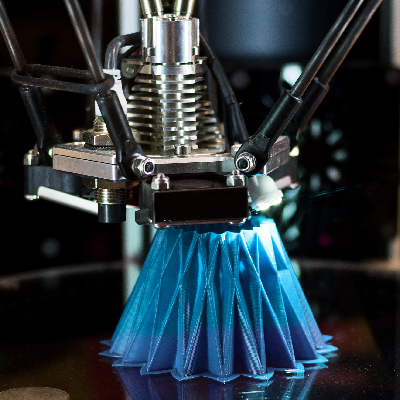The Industrial Internet of Things (IIoT) platform landscape is seeing unprecedented change and growth, a transformation that promises enormous opportunities – and potentially expensive and damaging downsides. Only selected machinery firms will be able to define business models to tap into the additional value pools that will emerge from IIoT. The majority should view the development of an IIoT strategy as a way to secure and further develop their own core business, and not necessarily as a new source of profit.
Based on more than 50 discussions and interviews with senior leaders of machinery firms and software companies from the IIoT platform ecosystem, Oliver Wyman has analyzed the IIoT landscape and sees a value migration taking place, one in which the greatest value will come from IIoT applications, rather than platforms and infrastructure.
Platforms and their underlying infrastructure are simply the enablers for the IIoT ecosystem.
However, it will be the end customer, not the provider of the IIoT application, who will gain and enjoy the lion’s share of this value. The majority of machinery firms should therefore focus on platform-agnostic applications that safeguard their core business and benefit customers. Moreover, they should leverage IIoT offerings to enable substantial internal value creation. Machinery firms should validate their IIoT strategies to avoid costly endeavors that have limited value.
What is our answer as to whether platforms will be a source of profit or an inflated hype? In short, for most machinery firms platforms are likely to be hype, but IIoT is still key to secure future profits.
AN EXPANDING ECOSYSTEM
The number of IIoT platforms is expanding rapidly. Already, there are more than 150 platforms in place, and the ecosystem is growing, with expectations concerning its value contribution – and disruptive potential – running sky-high.
Indeed, depending on which market study one reads, a future market in IIoT solutions reaching hundreds of billions in euros is treated as a given. According to the feverish projections of the studies’ authors, who draw on analogies from the B2C world, the opportunities would appear to be limitless.
Machinery firms have been drawn to the new value pool’s potential, too. They are leveraging IIoT platform solutions to increase process efficiency internally and to position themselves strategically, with select offerings aimed at customers. Thus far, the majority of solutions have been targeted at monitoring and optimizing customer equipment based on relatively basic algorithms and are not yet leveraging more advanced artificial intelligence-enabled solutions. Moreover, the IIoT offerings of most machinery companies are still in their infancy and have yet to add to company revenues or profits in any significant way.
Does the potential for a large IIoT platform value pool exist? And if so, what is the correct approach for machinery firms to tap into it? Should they try to adapt their IIoT strategy?
Currently, there are more than150 IIoT platforms across the globe
THE PLATFORM'S PROMISE
IIoT consists of using Internet of Things (IoT) technologies to enhance manufacturing and industrial processes. It incorporates machine learning and big data technologies to harness sensor data, machine-to-machine communications, and automation technologies that have existed in industrial settings for years. There are already multiple use cases that demonstrate the efficacy and benefits IIoT can bring. What the most successful use cases have in common is that they add value to customers by cutting costs in such areas as product development and maintenance and by increasing production output.
A key IIoT offering is predictive maintenance. By using real-time data generated from various sources, it is possible to predict defects in machinery before they occur, enabling companies to take corrective action before the part fails or machine breaks down. Another exciting area is centered on production process optimization, which involves using machine data and virtual test models to optimize production processes and quality. This creates savings on materials, setup, and personnel costs. IIoT also permits enhanced customer satisfaction: When products are connected to the IoT, the manufacturer can capture and analyze data about how customers use their products, helping them tailor future IoT devices, as well as to build and simulate customer-centric products.
FIVE IIOT PLATFORM ARCHETYPES
To deliver these solutions, leading IIoT players such as MindSphere, Predix, and Adamos are building IIoT platforms, as well as supporting ecosystems made up of technology and software partners, consulting and implementation partners, and startups. But “platform” is a term that serves to describe a range of activities. In discussing IIoT platforms, there are three distinct levels: the infrastructure, the platforms (in a narrow sense), and the applications.
Based on these three levels, there are five IIoT platform archetypes in the market. (See Exhibit 1.) The “proprietary solution provider” delivers an exclusive solution directly to each customer – or for its own internal production optimization. The “app provider” offers IIoT-based applications via existing IIoT platforms and marketplaces (similar to an app store), in order to reach a larger customer base. The “market place operator” establishes a marketplace on an existing IIoT platform and offers its applications on it. The “IIoT platform specialist” creates its own IIoT platform and marketplace to market its own applications and others within an industrial context (such as MindSphere, Predix, and EcoStruxure) or in a B2X context (such as C3 IoT, and Watson). Finally, there is the “IoT enabler,” such as Microsoft Azure, which focuses on leveraging its own infrastructure in combination with a platform offering. There are variations on these basic offerings, with IIoT platform providers leveraging existing white label platforms and placing their brand on or integrated providers supplying the infrastructure for other IIoT platforms.
Exhibit 1: Five archetypes of IIoT platform offerings
Source: Oliver Wyman analysis
THE FUTURE OF IIOT PLATFORMS
The IIoT ecosystem will most likely change dramatically in the coming five to 10 years. Based on our research and interviews with leading IIoT ecosystem players, these five theses will shape the future of IIoT platforms:
Typical B2C platform success factors will not apply: B2C platforms are characterized by a high number of customers, plug-and-play solutions, and a high number of transactions with unproblematic data traffic. None of these factors apply in the IIoT environment. The number of customers is significantly lower, with some companies having only a handful of customers. Plug-and-play IIoT solutions are often not possible, as the installed equipment is usually diverse, requiring a significant integration effort. The number of transactions is relatively low, driving companies to focus more on “best” data than on “big” data. In addition, a “data play” is hardly possible, given that B2B IIoT platforms typically do not own the data. Moreover, data security will
remain a key hurdle, as it is more important in the B2B than in the B2C world due to the sensitive nature of the information.
Value will migrate dramatically: The IIoT market value is expected to grow significantly over the coming years.
Currently, infrastructure players dominate the IIoT business. But over the next decade, value will migrate towards platforms and applications. (See Exhibit 2.)
Exhibit 2: Value migration in IIoT
Source: Oliver Wyman analysis
A similar dynamic between infrastructure and platform/application has taken place in the B2C world, where telecom-infrastructure providers (Deutsche Telekom, Telefonica O2, and AT&T) initially represented 70 percent of the combined market capitalization in 2008 and apps and content providers
(Google, Facebook, and Netflix) made up the other 30 percent. Today, the ratio is reversed: Google, Facebook, and Netflix represent 80 percent of market capitalization.
Coming back to the B2B world: It will be the customers, not the providers of the app, who will derive the lion’s share of the value from IIoT solutions, which are designed to enable cost reduction and/or yield improvement.
IIoT platform landscape will consolidate: The endgame will see three or four global, cross-industry IIoT platforms emerge as winners, along with roughly another 25 industryspecific
or regional IIoT players. This is similar to what happened in the Enterprise Resource Planning (ERP) systems and industrial controls market. Moreover, in the endgame there will be at least one global Chinese player, so data from Western companies using that platform may be stored in China, thus raising subsequent potential data security issues.
Customers will enforce open standards: Customers are likely to use services from more than one IIoT platform and will need to combine the data to enable end-to-end value chain optimization. As a consequence, they will demand open data exchange as well as interoperability, which will drive the
further emergence of open standards. A similar development can be seen in the B2C world where the previously proprietary connected home market is now becoming more interoperable via open standards developed by companies such as ZigBee.
Customers will only pay extra for IIoT services that demonstrate clear value-add: Just adding new product features will not create new value pools. All application categories, such as engineering optimization, production optimization and asset management, will have a set of basic solutions that the customer takes for granted. The client will only pay extra for more advanced solutions, that enable a clear and measurable value-add.
IIOT PLATFORM STRATEGIES FOR MACHINERY COMPANIES
What does this mean for machinery companies? How will they make money in the future IIoT platform ecosystem? To answer these questions, a framework matching the manufacturer’s relative strength versus the competition provides guidance. (See Exhibit 3.)
Exhibit 3: IIoT platform strategies for manufacturing firms
Source: Oliver Wyman analysis
The suggested platform offering for a manufacturer is dependent on its relative positioning on the matrix. Of course, a more specific assessment will take into account a broader set of dimensions
such as type of production flow and scalability when looking at an individual strategy for a manufacturer.
We analyzed the various platform strategies to assess where the best opportunities lie. The archetypes AT4 and AT5 from the previous section make limited sense for machinery companies and are not mapped in Exhibit 3. Given the dominance of Microsoft, Amazon Web Services, and Alibaba Cloud at the infrastructure level, competing as an “IoT enabler” (AT5) will be almost impossible; instead, machinery firms should build on the offerings of the three big infrastructure players. Similarly, developing one’s own IIoT platform (AT4, “platform specialist”) will have little chance of success. The motivation behind establishing one’s own IIoT platform is to shield against dependency on software and automation players. But this will be hard to sustain since customers are likely to demand open, flexible systems.
Running a marketplace on a third-party platform (AT3) makes sense in case a manufacturer truly dominates the industry, as a large customer base can be reached with a moderate investment. Focusing on platform agnostic apps (AT2) may be the best way to participate in the IIoT platform business, especially when the manufacturer has limited access to the end customer and a limited view of the entire production process (such as non-critical component suppliers). Offering apps or customer-specific solutions directly to the client (AT1) makes the most sense where the
industry is highly professionalized and consolidated and the company’s competitive position is strong (such as a plant engineering company in the automotive industry).
Given the value migration towards the application layer, developing platform-agnostic apps seems to be the most promising approach among the potential strategies. The apps will need to maintain a high level of flexibility and address a larger customer base. More importantly, they must be able to demonstrate tangible value, allowing customers to increase process efficiency or reduce costs. Before introducing “pay per use” business models, a company needs to ascertain whether it generates customer value and whether the resulting shift in risk (such as becoming the owner of the machinery and assuming the business risk) can be correctly assessed, quantified, and priced.
Given that most of the value-add being generated by IIoT platform solutions will be captured by its end customers, machinery companies should make sure that they themselves too leverage IIoT solutions to optimize their internal processes and capture substantial value.
THREE STRATEGIC CONSIDERATIONS FOR MACHINERY COMPANIES
The majority of machinery companies should emphasize three areas in their strategic considerations. First, they should focus on applications, not on platforms. Second, they should leverage IIoT offerings not only for potential new business models but also for substantial internal value creation. Lastly, the question of how to safeguard and further develop the core business should take priority over high hopes for huge add-on revenue streams.
Machinery companies need to review and challenge their IIoT strategy and platform offering, based on where they view themselves as well as on the value-add potential of their offering. Currently, IIoT platforms for machinery companies are for the part hype. But in the future, IIoT will be essential to securing profits at manufacturing firms.











